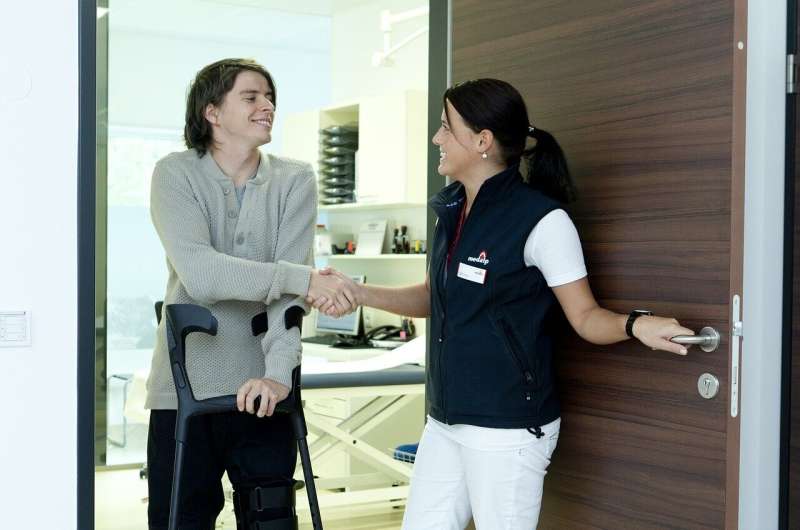Home » Health News »
Study links post surgery mobility to favorable outcomes

Research led by the Cleveland Clinic in Ohio evaluated postoperative recovery rates from elective surgery in a study, “Association Between Mobilization and Composite Postoperative Complications Following Major Elective Surgery,” published in JAMA Surgery. They found that for patients who underwent major elective surgery, every four minutes of mobilization per monitored hour was inversely associated with postoperative complications and was related to shorter hospitalization times. A commentary published in the same journal also discusses the study’s findings.
Postoperative mortality rates within 30 days are around 1% to 2% and major complications are about ten times more common than deaths. One of the leading approaches to post-surgery recovery is to get the patient mobile with Enhanced Recovery After Surgery (ERAS) protocols designed to promote recovery, expedite healing, and reduce postoperative complications. While these protocols are based on expert opinion, there is little documented evidence that mobilization within ERAS improves postoperative outcomes prompting researchers to take a closer look.
Utilizing retrospective data from multiple health care sites, 8,653 patients who met inclusion criteria were analyzed to see how mobilization related to outcomes. The study looked for complications, hospital length of stay, cumulative pain scores, and 30-day readmission rates.
Mobilization time within the first 48 hours was a median of 3.9 minutes per hour overall. Mobility was lower at 3.2 minutes per hour in patients who died or experienced major complications (myocardial injury, ileus, stroke, venous thromboembolism, or pulmonary complications) compared to the 4.1 minutes per hour in patients who did not.
Increased mobilization ability was associated with decreased complications and reduced hospital stay length. No associations were seen between mobilization and pain scores or 30-day readmission rates.
While the outcomes were more favorable for patients with increased mobility, there is a very real chance that data could be revealing mobility as a risk signal for complications instead of having any direct recovery causation. Another possibility is that the effects of complications, perhaps not yet diagnosed, could already be reducing patient energy and mobility in the first 48 hours.
The researchers recognize this problem with interpreting their data and conclude by suggesting, “Only a randomized clinical trial will identify the fraction of mobilization benefit that is causal and thus amenable to intervention. Our data suggest that a trial would be well worth conducting, challenging as it may be.”
The question of how such a randomized trial would be constructed is unclear and is not answered by the authors. Patients in any randomized grouping would have to be limited to no more than the lowest reported mobility of less than one minute per hour seen in the current study to avoid the risk of overexerting patients.
If the fraction of mobilization benefit is zero, such a clinical trial involving humans might not need to be conducted at all. A less challenging place to start might be in constructing an experiment with mice to see if mobilization protocols, which currently have such little documented evidence that they prompted the current study, are even worth testing for in humans.
More information:
Alparslan Turan et al, Association Between Mobilization and Composite Postoperative Complications Following Major Elective Surgery, JAMA Surgery (2023). DOI: 10.1001/jamasurg.2023.1122
Martin Almquist, Mobilization and Composite Postoperative Complications, JAMA Surgery (2023). DOI: 10.1001/jamasurg.2023.1128
Journal information:
JAMA Surgery
Source: Read Full Article


